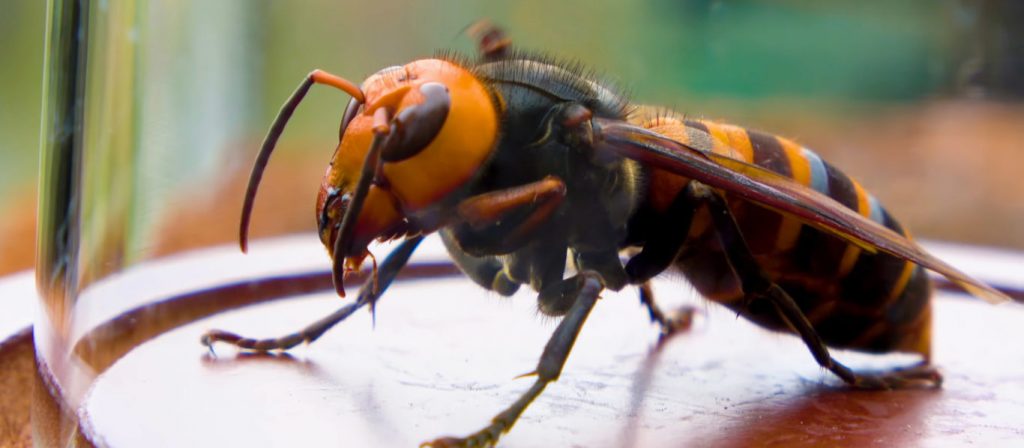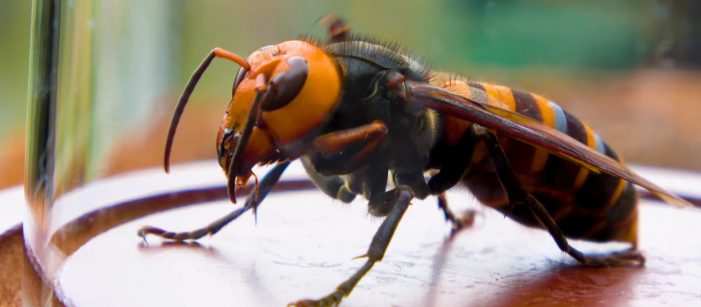
You’ve probably heard of the “murder hornet,” or Asian giant hornet, by now. It’s the world’s largest hornet. Native to Asia, it was sighted for the first time in Washington state and Canada in late 2019. Keeping these insects out of Texas is important because they are formidable predators of honey bees, which are crucial for crop pollination.
The main problem caused by this hornet, Vespa mandarinia, is that it uses honey bees as a principal food source. This level of predation could decimate Texas honey bee populations. If our bee populations decreased, crop yields would greatly suffer, as would honey production.
It’s such a potentially big problem that Gov. Greg Abbott requested a task force be mobilized to prepare Texas against the Asian giant hornet’s arrival. The team of Texas A&M AgriLife experts aims to help protect Texans, crops and honey.
Asian giant hornets are really big
The Asian giant hornet is native to many areas from Japan and South Korea to India and Pakistan. Up to 2 inches long, these insects are about a one-half inch larger than the cicada killer wasps common in Texas. A bee species that co-evolved with these hornets has a coordinated defense strategy. However, the European honey bees prevalent in Texas have no natural defense against this predator.
Like many other hornets and yellowjackets, Asian giant hornets tend to nest underground. And, like other similar species, Asian giant hornets are fiercely protective of their nests. Their painful stings are no more toxic than those of other stinging insects, but they can cause fatal allergic reactions in people already sensitive to bee stings. A standard beekeeper’s uniform does not protect against the hornets’ stings.
“A colony of honey bees with 30,000 to 50,000 workers can be killed by 15 to 30 hornets in a matter of hours,” said David Ragsdale, Ph.D., chief scientific officer and associate director of Texas A&M AgriLife Research, and professor in the Department of Entomology. “The hornets then occupy the hive and kill the developing larvae, using this protein-rich meal to feed their young.”
How did the hornet get to the U.S.?
How the pests ended up in Canada and Washington is not yet clear. Most hornets are workers, which cannot reproduce or start a new hive. Experts believe that ship or airplane cargo may have inadvertently transported a fertilized female hornet. That’s why a key part of the Texas response is securing state entry points for cargo transportation.
The strategy includes preparing Customs and Border Protection staff to detect the Asian giant hornet. The work will also involve increasing surveillance of incoming containers and evaluating opportunities for specialized detection. One possibility is that scent-trained dogs might be able to find these hornets hidden in cargo.
How can Asian giant hornet be controlled?
Pest control for Asian giant hornets relies on understanding their life cycle. The hornets’ mating season is in the fall, the time period of greatest concern for the hornets’ spread. After mating, the newly mated queens find places to overwinter while the rest of the nest dies out.
Hornet queens re-emerge in the spring to raise their young. Once the queen has reared a few dozen workers, she no longer leaves the nest. To control the insects at that point, each underground nest must be located and the queen killed.
The Washington State Department of Agriculture, WSDA, has created a systematic trapping program to determine whether any of the hornets overwintered in the region where they were found last fall. If WSDA confirms the hornets are overwintering, the department’s next step will be to locate and eradicate all of these wasps’ nests before mating season in late summer.
Asian giant hornets not in Texas yet
Entomologists say that they have not seen Asian giant hornets in Texas.
If you are curious about an insect on your property, you can send a photo of the insect to Texas A&M entomologists for identification.
Or, you can also follow instructions to send an insect specimen to Texas A&M for identification.
For more information, see a thorough review of the pests’ biology, geographic distribution and control methods by USDA APHIS.
 Our print edition is delivered free to ~15,500 homes in Rockwall and Heath, TX.
Our print edition is delivered free to ~15,500 homes in Rockwall and Heath, TX.
To share your good news and events, email editor@BlueRibbonNews.com.
Subscribe to our email newsletter here.
Advertising: 214-342-8000 or advertising@BlueRibbonNews.com.






